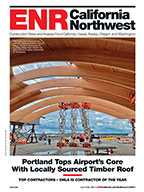One problem with geopolymers is their instability. The materials are formed when aluminosilicates, such as fly ash, are blended with alkali activators to form an aluminosilicate gel. On the other hand, crystals and calcium-silicate-hydrate gel form portland cement, which is easier to replicate outside a lab, experts say.
Claims of breakthrough discoveries are common but rarely live up to the hype, notes Hamlin Jennings, leader of the Massachusetts Institute of Technology's recently created Concrete Sustainability Hub. “[A mix] can harden very rapidly, or it can get hard very slowly,” says Jennings. The Skokie, Ill.-based Portland Cement Association, which funds MIT's research, declined to comment for this story.
“What we have is not perfect and still needs further development before it can compete against modern portland cement in all applications,” says Jannie S.J. van Deventer, Zeobond's CEO. “But we have come a long way.”





Post a comment to this article
Report Abusive Comment